What to explore in the Nõo region
Naturally fascinating and culturally rich, the Nõo region is ready for explorers! We’ve listed 5 must-see places to visit in the Nõo area.
1. Active Break in Nõo
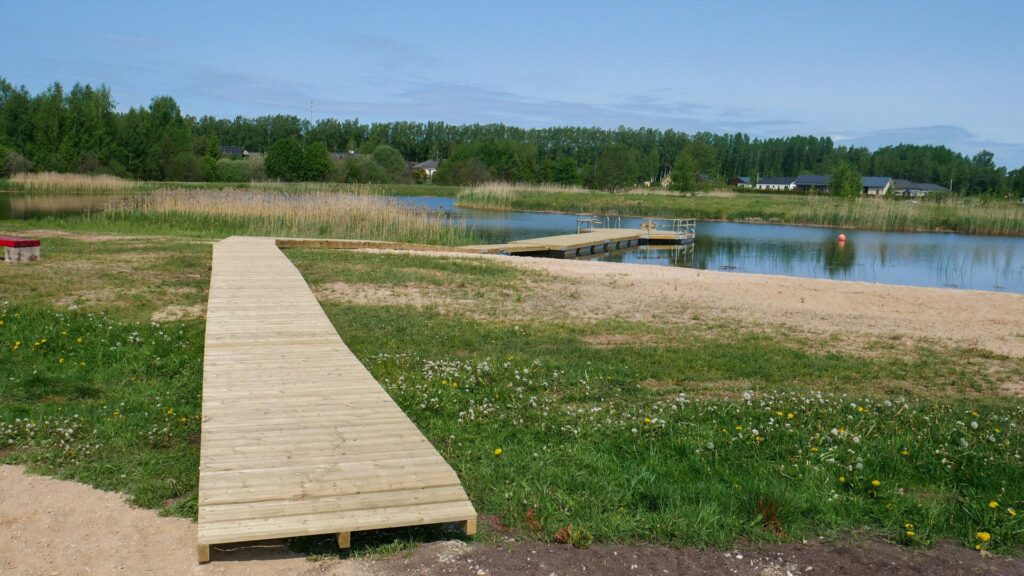
Nõo Veskijärve Swimming Area
“During the summer, the Veskijärve swimming area offers a refreshing escape. Nõo Veskijärv is a beautiful reservoir on the edge of Nõo town, featuring two islands in the middle that can be reached by swimming or with a personal boat. Nearby, you’ll find a volleyball court with two playgrounds and a dedicated children’s play area.”
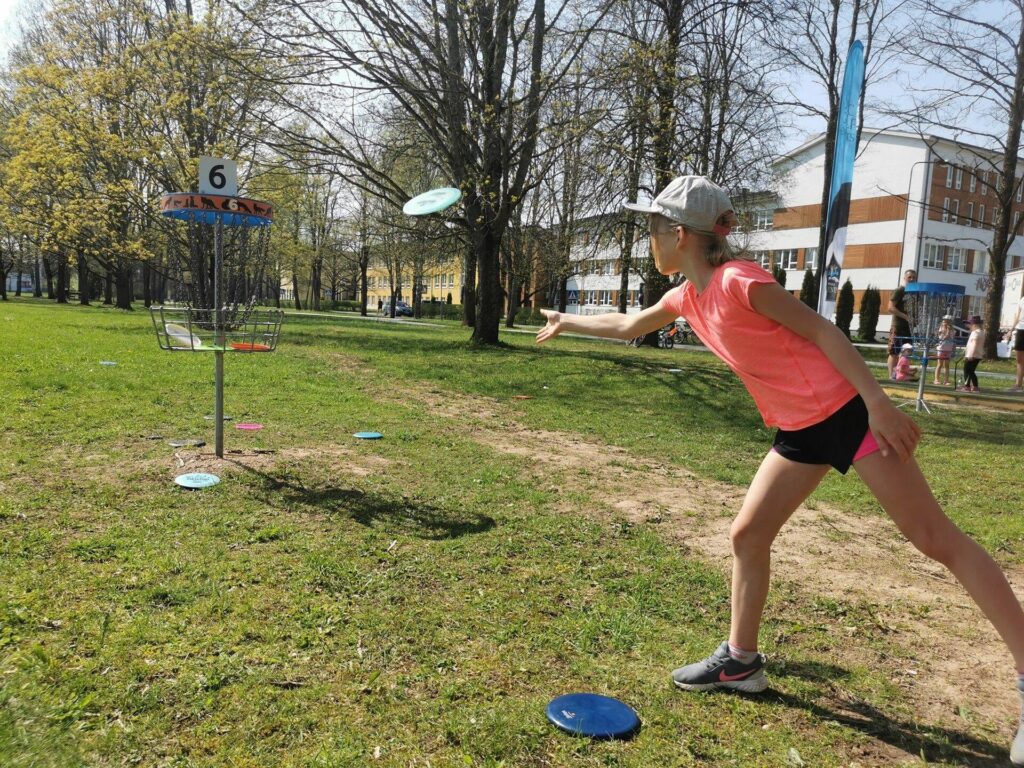
Nõo Disc Golf Learning Course
What makes the disc golf learning course in Nõo special is that it is designed specifically for children and beginners! The course features 6 baskets arranged in a winding, circular layout in the park area between Nõo Primary School and Nõo High School.
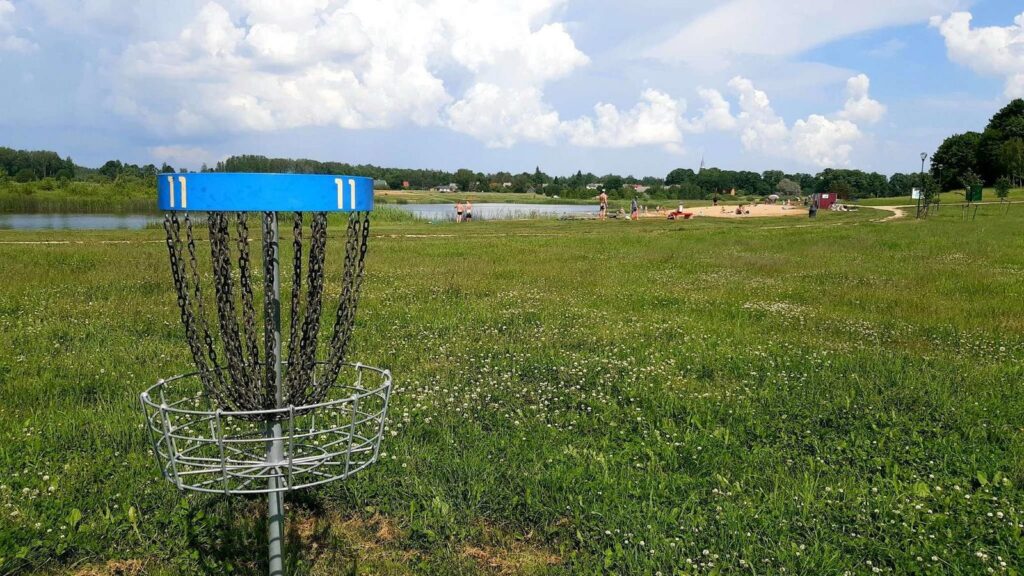
Nõo Disc Golf Park
“Nõo Disc Golf Park, or the lakeside course, is designed for more advanced players while still being friendly for enthusiasts. The course features 12 baskets, and a map of the course is displayed near the Nõo town hall.
2. Luke Manor and Park
Luke Manor boasts a beautiful Neo-Baroque park with terraced levels and uniquely shaped trees that were once trimmed. The park features impressive concrete lion sculptures flanking the staircase between the terraces. The Kärnerimaja building within the park houses an information center and a café.
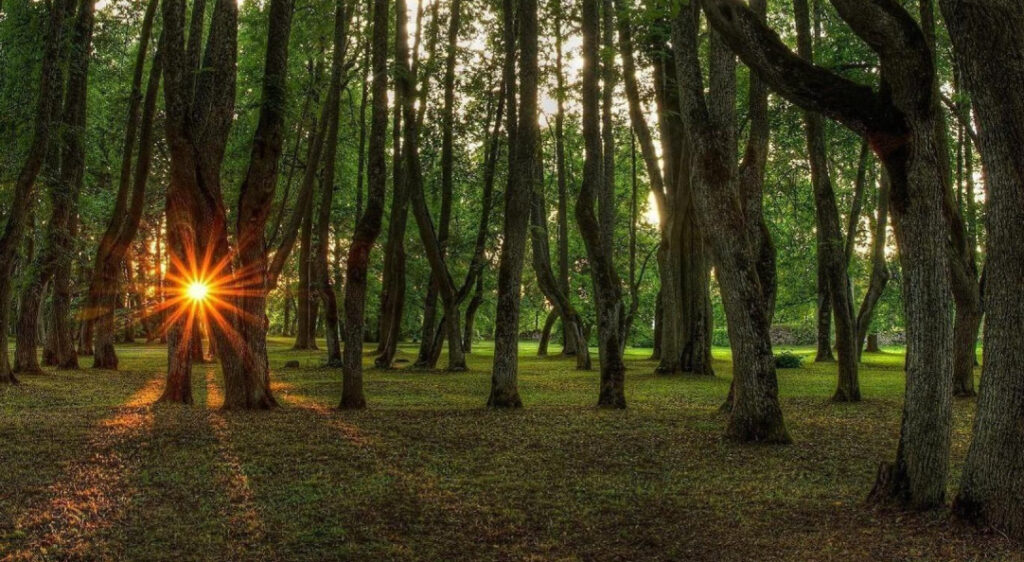
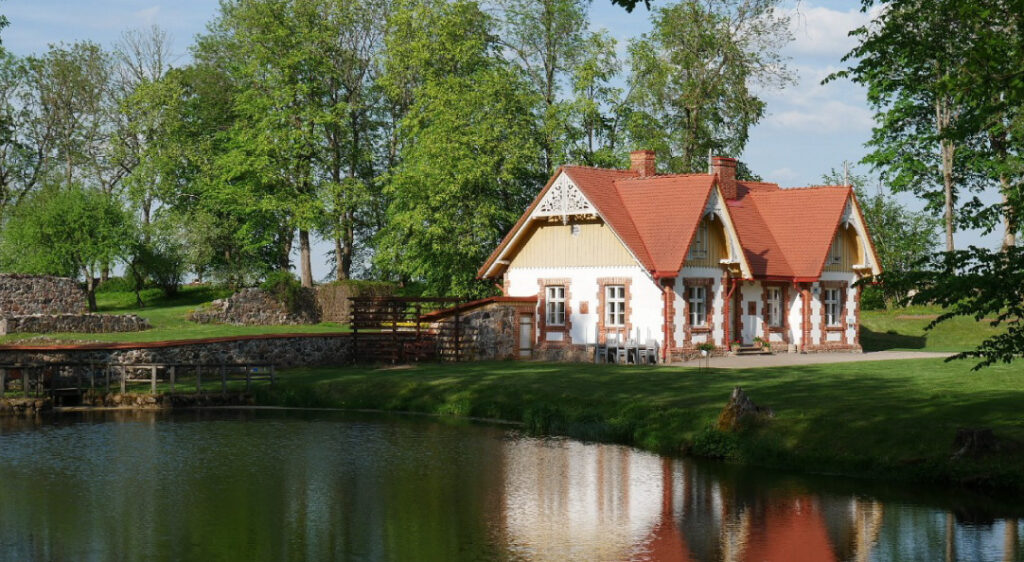
3. Enjoy Nature
Vapramäe Landscape Protection Area
The Vapramäe Landscape Protection Area and its surroundings are well worth a visit for their diverse terrain and beautiful nature. This area features one of Estonia’s smallest fortress sites, Kerikmägi, the Jaagupi ancient fort, the Tiirikese spring, the Elva River, and several old watermills, among other intriguing sights. The Vapramäe Landscape Conservation Area is located in Nõo Parish, Tartu County, along the Tartu-Valga highway. It is 20 kilometers from Tartu and 5 kilometers from Elva.
Elva-Vitipalu Landscape Protection Area
In the Elva-Vitipalu Landscape Protection Area, you can marvel at the ancient river valley sandstone cliffs of the Elva River and the restored floodplain meadows. Established in 1992, this conservation area was primarily created to preserve the landscapes surrounding the Elva River and the pristine Laguja, Illi, Varesepalu, and Ilusa streams. Its purpose is to maintain the scenic integrity of the floodplain valleys and protect endangered habitats and species.
4. Fascinating Antiques
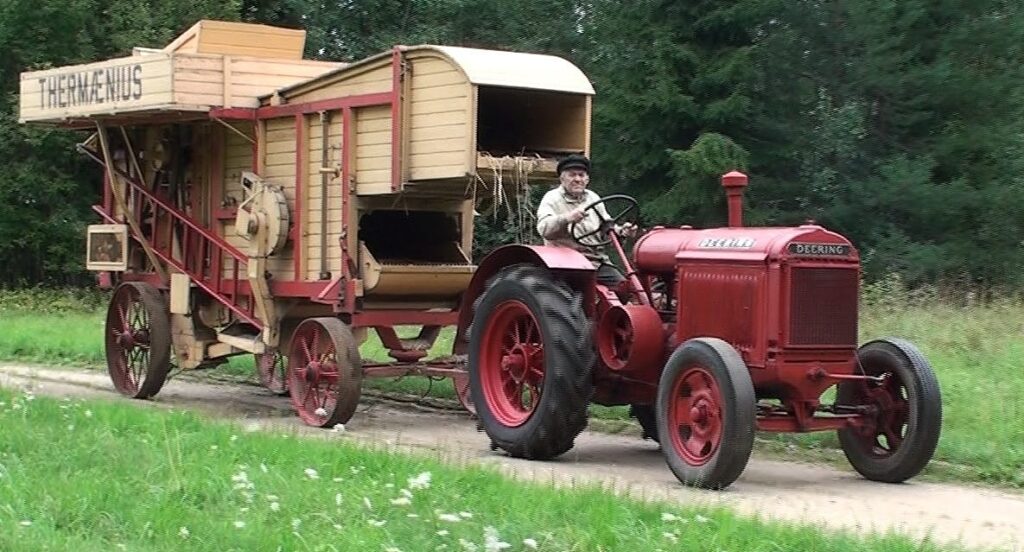
In Vissi village, you can visit the Heino Proost Agricultural Machinery Museum, established in 1954. The museum features antique farming machinery from past centuries, including tractors, threshing machines, steam boilers, and household engines. The oldest yet functional machine is a German-made hand-operated threshing machine from 1856. You can contact the museum at +372 735 1401.
The Wana-Kolga Motorcycle Club, located in Kolga village, gathers enthusiasts of vintage motorcycles over 35 years old. The club’s collection includes over 70 different vintage motorcycles, with the finest displayed in the club’s exhibition hall.
5. Historical Sacred Buildings and Monuments
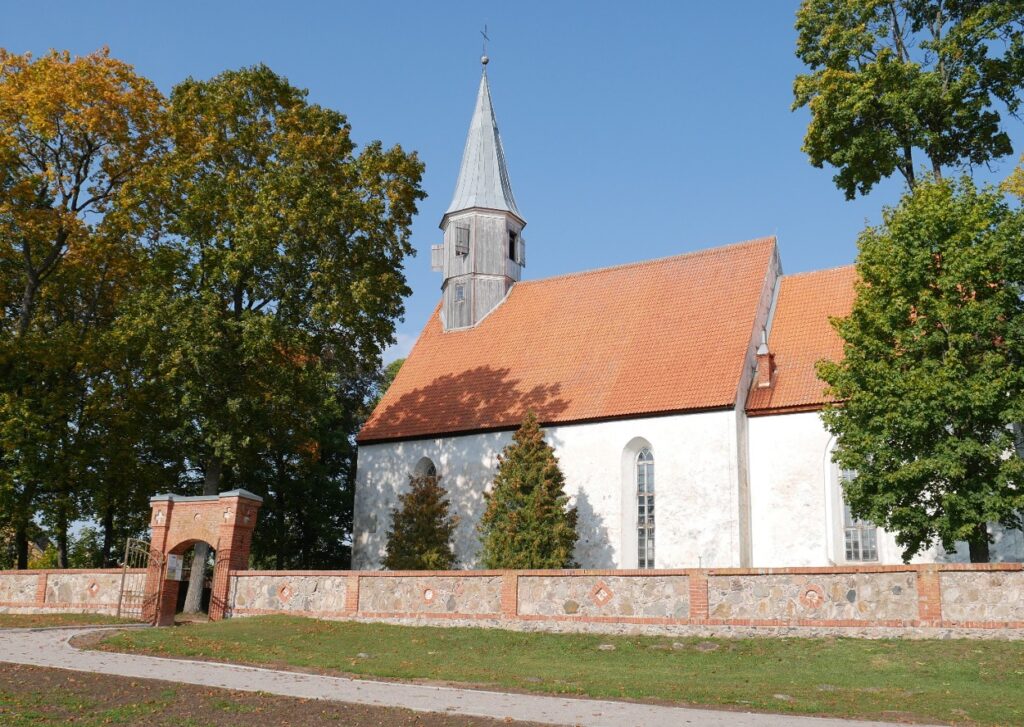
EELK Nõo St. Lawrence Church
In Nõo town (Tartu Street 2) stands the only authentically medieval vaulted parish church (13th century) in Southern Estonia. The church features a wooden organ loft (1817) and 19th-century pseudo-Gothic interior decor. During the summer months, Nõo Church participates in the “Pilgrim Churches” project organized by the Estonian Council of Churches. The churchyard also hosts a café open during the summer season.
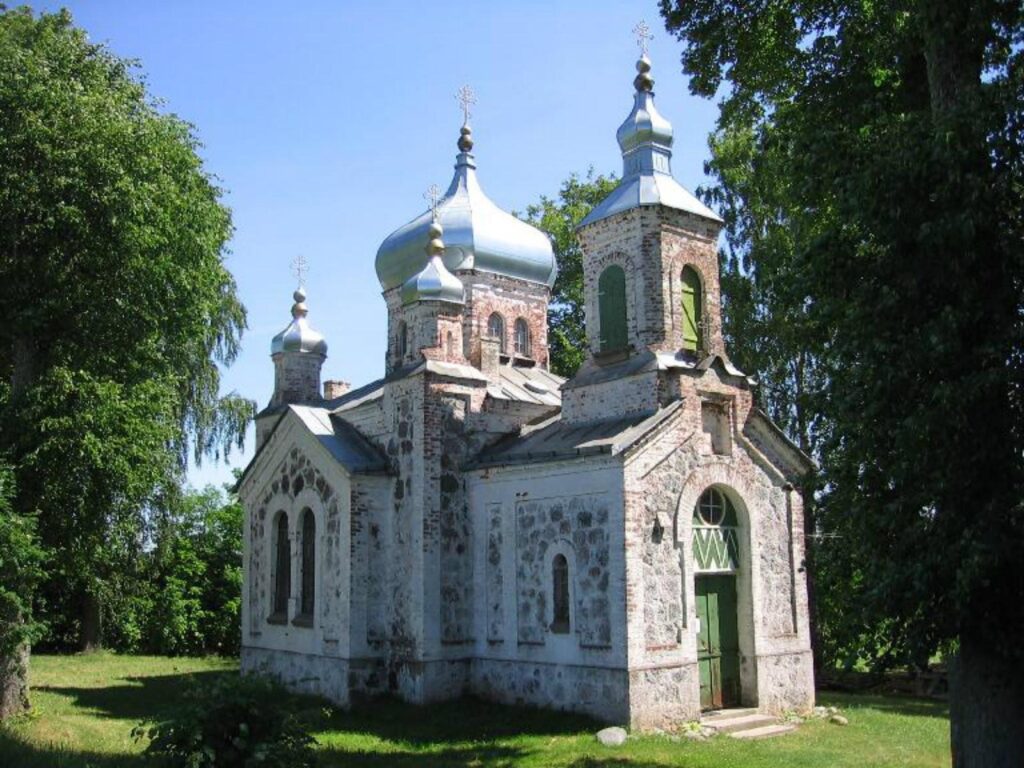
Nõo Holy Trinity Church of the Estonian Apostolic Orthodox Church
In Nõo (Vana-Nõo Street 20), you’ll find a noteworthy historicist Orthodox church with five onion domes, constructed from fieldstones and brick walls. The Nõo congregation was established in 1852 for Estonian Orthodox Christians who previously belonged to the Tartu George congregation. The church, built of lime-washed fieldstones and red bricks, was completed in 1873.
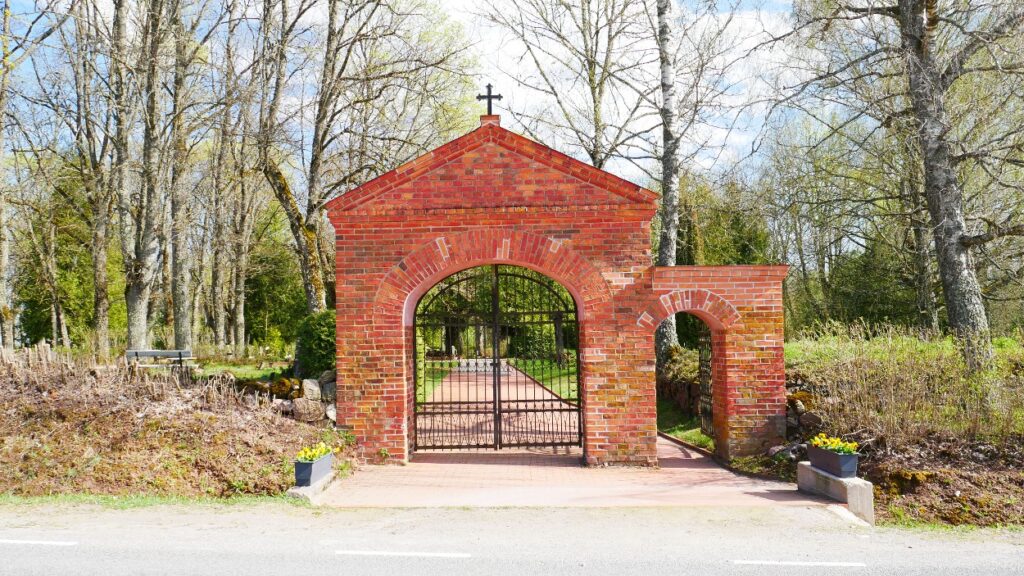
Nõo Cemetry
Nõo Cemetery is located in Aiamaa village, Nõo Parish, and was established by the Löwenwolde family. The cemetery’s history dates back to the 18th century, with one of its oldest grave markers belonging to Carl Magnus von Löwenwolde (1728-1799), the lord of Luke Manor, who was buried there at the end of the century.
Nõo Cemetery is the final resting place of Martin Lipp (1854-1923), a renowned cultural historian and poet who served as the pastor of Nõo Church from 1884 to 1923. He is best known as the author of the lyrics to the song “Eesti lipp” (“The Estonian Flag”). The cemetery’s main entrance is marked by a brick gate, with metal components bearing the date 1925. Upon entering the main gate, to the right, you’ll find the remnants of the foundation of the former cemetery caretaker’s house. In the southeastern part of the cemetery lies the final resting place of the Löwenwolde-Knorring family, the lords of Luke Manor, which is separated from the rest of the cemetery by a stone wall. Nõo Cemetery also features several monuments created by sculptor Anton Starkopf, the most famous being the granite tombstone with a bronze bust of Martin Lipp, made in 1932.
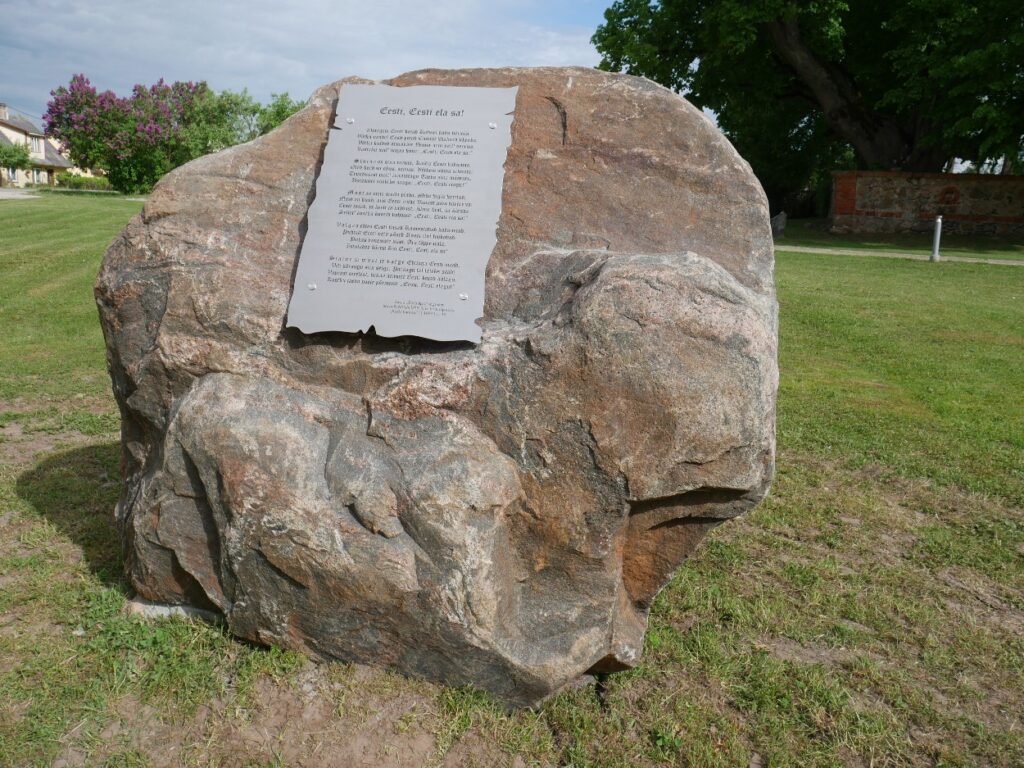
Memorial Stone Dedicated to the Estonian Flag Song
In the green area of the Nõo St. Lawrence Church, there is a large boulder with a memorial plaque dedicated to the Estonian flag song. The plaque, etched in metal, features the original five-verse text of the song “Eesti, Eesti ela sa!” (“Estonia, Estonia, May You Live!”), written by Nõo pastor Martin Lipp. The lyrics were first published in the 1897 issue No. 19 of “Kodu kannid.” In 1922, a 17-year-old Enn Võrk composed the music for these words.
Globally, only fourteen countries have an official flag song, and Nõo is now the only place with a memorial stone dedicated to one.